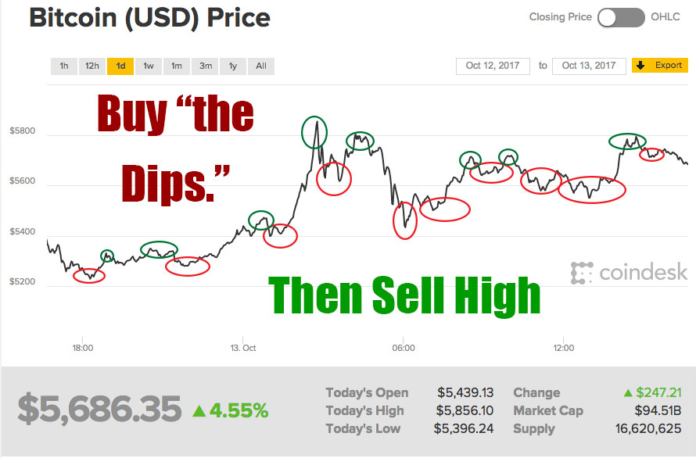The Ethereum’s (ETH) change to Proof of Work (PoW) to the Proof of Stake (PoS) algorithm is set to take place in August. The algorithm is dubbed “The Merge”, the change will be part of Ethereum 2.0 version upgrade.
“The merge might be one of the most influential events in the history of crypto by impacting Ethereum both technically and economically,” said Saxo cryptocurrency analyst Mads Eberhardt.
What exactly is The Merge and what impact will it have on Ethereum’s original cryptocurrency Ethereum? In this article, we take a look at the latest developments of the PoS change and what other factors affect the price forecast for Ethereum in 2022 and beyond.
What will The Merge change Ethereum’s operation?
The move from PoS over PoW will alter the method that Ethereum blockchain confirms transactions. Instead of consuming huge amounts of computing power to verify and generate new blocks, miners will be able to stake ETH coins on the network, thus significantly reducing the amount of energy consumed.
With regard to Ethereum the block is being finalized approximately every 13th second. Within these 13 seconds, each miner is fighting to be the first to complete the block. This involves using computing power, and therefore calls for electricity. Saxo’s Eberhardt said.
However it is true that in the end, it’s only one miner who completes the block and validates the transactions, despite the fact that other miners have also invested an enormous amount of energy into this block.
The Merge does not cause any additional harm to holders of ether. It isn’t likely to impact the tokens, or smart contracts that are running on blockchain. Applications that are decentralized ( dApps) will function the same as they did before.
The Merge is not expected to dramatically increase the capacity of Ethereum because of the introduction of shards that break the blockchain into smaller pieces to be added in the coming year.
The Ethereum development team has successfully completed the first public test of “The Merge” on June 8 in the Ropsten test network (testnet). Testnets are essentially versions of blockchains that let developers try out new features before introducing these to the real blockchain or the mainnet. Because testnets are full-scale blockchains, they expand over time, which makes them more difficult to keep up.
Figure: Investors buy the dip
In the most recent information, on the 21st of June 21 June, the Ethereum Foundation, which develops the network, announced that two additional testnets along with Ropsten are to be closed following The Merge.
Kiln Merge testnet Kiln Merge testnet which was established early in the year 2022. It will be removed shortly after the change to PoS. Ropsten was Ethereum’s longest-running PoW testnet prior to the transition to proof-of-stake, which will be closed during the 4th quarter in 2022. Additionally, Rinkeby which is a testnet that uses proof-of-authority is not going to transition from proof-of-authority to PoS and will close in the third or second quarter of 2023.
The closing of three testnets leaves two additional testnets to remain in operation for the long term, Goerli and Sepolia. Goerli will join Prater’s Beacon Chain testnet and a new Beacon Chain has been created to move Sepolia to PoS, The Foundation announced.
Upgrades are not working as planned ETH price
The price of the ETH coin has fallen over the past few months, despite the approaching of “The Merge” because the market for cryptocurrency has been sluggish, particularly since the demise of TerraUSD stablecoin (UST) and its corresponding LUNA coin in the month of May.
Ethereum price prediction: Do investors invest in the dip?
The Ethereum’s ( ETH) change between Proof of Work ( PoW) to the Proof of Stake ( PoS) algorithm is scheduled to take place in August. The algorithm is dubbed “The Merge”, the transition comes as part of the Ethereum 2.0 update.
“The merge might be one of the most influential events in the history of crypto by impacting Ethereum both technically and economically,” said Saxo cryptocurrency analyst Mads Eberhardt.
What exactly is The Merge and what impact will it have on Ethereum’s original cryptocurrency Ethereum? In this article, we examine the most recent developments of the PoS transition , and the other factors influence the prediction of the price of ether in 2022 and beyond.
What will The Merge change Ethereum’s operation?
The switch from PoS over PoW will alter the way Ethereum blockchain validates transactions. Instead of using large amounts of computing power in order to validate and generate new blocks, miners will be able to stake ETH coins on the blockchain, thereby drastically reducing the energy use.
“With respect to Ethereum, a new block is currently finalized around every 13th second. In these 13 seconds, every miner fights to be the one to finalize the block. This involves applying computing power and thus requires electricity,” Saxo’s Eberhardt stated.
“However at the end, it’s the sole miner who finishes the block and confirms the transactions, despite the fact that other miners have invested an enormous amount of time and energy working on that block.
“In terms of proof-of-stake, one validator is randomly chosen to finalize a block based on one’s amount of Ether staked. This happens prior to the Bitcoin price forecast, so no other stalker is trying to finalize the same block, ultimately reducing Ethereum’s energy consumption by around 99.95%.”
PoS will also boost the financial performance for it. Ethereum blockchain, because in PoW Ethereum issues 5.4m ETH annually to miners, however it will only issue 0.5m of ETH to stakers. This will lower inflation and might cause Ether to become deflationary, as some of the fees for each transaction will be burnt and the total supply.
“The Merge does not dramatically increase the capacity of Ethereum since the introduction of shards which break up the blockchain into smaller parts to be added in the coming year.
The Ethereum development team was able to successfully complete the first public test of “The Merge” on the 8th of June Ropsten Testnet (testnet). Testnets are essentially replicas of blockchains that let developers test new features before submitting their features to the blockchain’s live network or the mainnet. Because testnets are full-scale blockchains, they increase in time, which makes them harder to keep up.
In the most recent news, on June 21, The Ethereum price prediction 2025 Foundation, which develops the network, announced that two additional testnets and Ropsten are to be closed following “The Merge”.
Kiln Merge, the Kiln Merge testnet that was established in 2022. It will close shortly after the switch to PoS. Ropsten was Ethereum’s longest-running PoW testnet prior to its change to proof-of-stake, and is scheduled to be closed at the end of the fourth quarter 2022. Additionally, Rinkeby is a testnet for proof-of-authority that is not going to transition into PoS and will close in the third or second quarter of 2023.
The end of the three testnets will mean two testnets that will be maintained for a longer time, Goerli and Sepolia. Goerli will join with Prater’s Beacon Chain testnet and a new Beacon Chain has been created to help transition Sepolia to PoS the Foundation announced.
The upgrade is not able to meet ETH price
The price of the ETH coin has fallen over the past few months despite the imminent “The Merge” since the cryptocurrency market has become bearish, particularly after the demise of TerraUSD stablecoin (UST) as well as its companion LUNA cryptocurrency in May.









